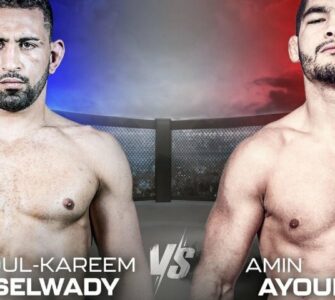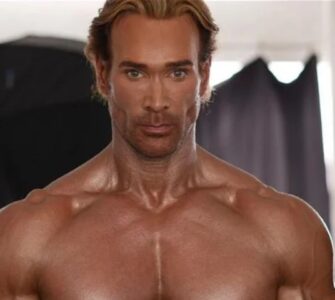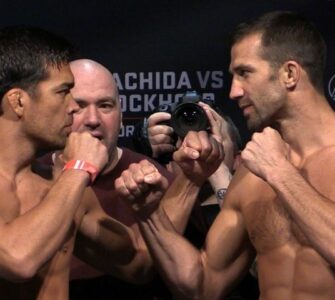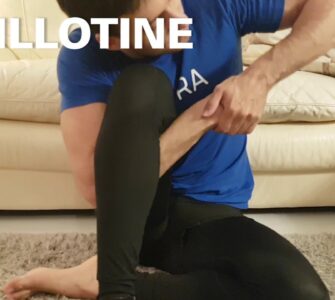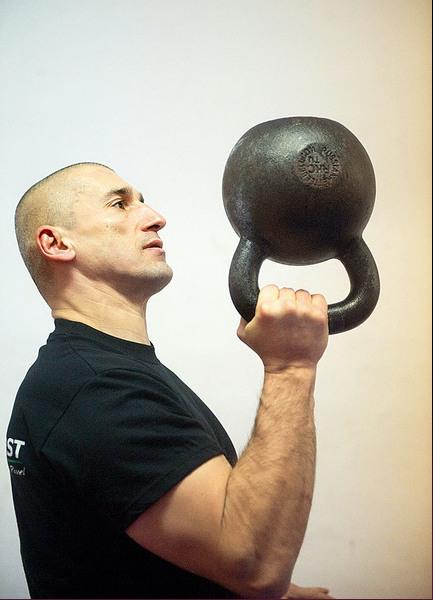
Peter Lakatos is a StrongFirst Girya Master Instructor with Pavel Tsatsouline, Expert 2 Krav Maga instructor with Eyal Yanilov, blue belt Brazilian jiu jitsu practicioner with Carlson Gracie Jr., and a creator of Primal Move. Peter was born and lives in Budapest, Hungary. In this interview with BJJ Eastern Europe shares his views on strength training for BJJ players which he has put into practice with the beasts at Carlson Gracie Team Hungary:
Hi Peter can you please introduce yourself to BJJ community of Eastern Europe?
My name is Peter Lakatos- Blue belt under Mihaly Sztraka, Carlson Gracie Hungary, Krav-Maga expert 3 instructor by Eyal Yanilov, StrongFirst Kettlebell Master instructor under Pavel Tsatsouline. I have been invited to teach a kettlebell seminar to Carlson Gracie Hungary Team, 6 years ago. Since then we are in contact, but I did not start BJJ then. Later I started to learn no-gi from Gabor Fodor – black belt in CGTH – and our Master Mihaly Sztraka always asked me when I start gi bjj, because that is the real jitsu. One day I gave a try, and boy he was right. That was 2 years ago, since then I train 4-6 times a week. I have no interest in competing, since I am 43 years old.
Strength wise started to train powerlifting age 21, best lifts without bel or strap was 230kg squat, 200kg bench and 210 deadlift – currently I weigh 76 kg. In 2005 started to train with kettlebells, and 2006 joined to Pavel Tsatsouline, became master instructor 2 years ago. Since than I am teaching kettlebell certifications around the World. Did some crazy lifts before, like 60kg kettlebell turkish get up, 60kg kettlebell one legged squat, 15 times kettlebell snatch with the 48kg, 40kg kettlebell bottom up press – all at my current bodyweight.
Main goal to become a bit better today, than the person I was yesterday, in all aspect in life, and bjj became part of my life.
I first heard about you as being the strength coach for Carlson Gracie Team Hungary. How is it working with BJJ athletes?
First of all they had to understand, they have to reach an entry level strong status to became really very well conditioned. Strength does not necessary means they are huge or muscular as a body-builder. That would be contra-productive for BJJ. While there is many correlation between strength and size, tone can be strong, even freaky strong without being huge – think about the gymnast. Strength is the master quality, and all other variation of strength – endurance, strength-endurence, speed, speed-endurance etc – comes from that one master quality. If you are not strong, what to endure? Again, I mentioned entry level, not being the strongest man on the whole world. Those guys who are interested in our program, train 2-3 times with our StrongFirst kettlebell instructors, and the focus is strength, raw, primitive strength only.
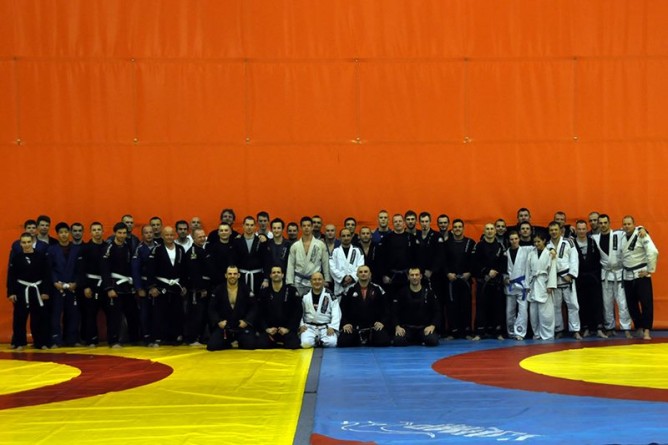
Carlson Gracie Team Hungary
I’ve read your recent article where you said that BJJ players should mainly focus on strength training and leave the conditioning part to BJJ training (rolling). Can you elaborate on that?
Nobody ever got beaten up, just because he/she was too strong. BJJ is a skill, more and in better quality you practice, better you became in it. Same with strength – it is a skill, must practice in good form, often enough to get better and better in it. In preparation for a competition, we aim to reach a strength level it can transform into other forms of strength – mentioned above – but we don’t use machines, weight trainings or even running to reach for example strength-endurance, but we play with the intensity with the BJJ sparrings. In an age when everybody speaks about sport-specific training we say: nothing is more sport-specific for for BJJ than BJJ itself. I think normally 2-3 strength trainings are enough for the guys, and we focus on deadlift, squat, modified presses and pull ups, also kettlebell swings, turkish get up. We keep our strength training very simple – when your main sport is very technical, keeping the strength training simple also means safety issue.
I saw a youtube video of Marcelo Garcia saying that he trains his conditioning by rolling hard. What do you think about that? How would that compare to doing hill sprints for ex, regarding conditioning for BJJ?
Hard to argue with him…Because he is Marcelo Garcia…Conditioning is really beneficial only for a skilled athlete, who has the entry level bjj and strength skill. When skills are present, you can challenge the skills with time, speed, intensity. Today many people speaks about skills only. Skills are naturally first in BJJ, but strength does not only give you an option to dominate your opponent, also see as your body armor – protection agains injuries, just like mobility and stability.
Can you tell us about the effects for a BJJ player when lifting heavy/low reps or light/high reps.
Normally we have 4-6 exercises, 15-25 reps per exercises, and working in the 75-90% area of the 1 rep max. My job as a strength coach is not to make strength training fun or crazy – but effective. The above numbers are guidelines only – based on the athletes personal experience and also the goals – if you cant gain weight through your strength training I will use a bit different strategy, if you can gain weight – well, that is again a different approach.
Let’s say we have a BJJ player, average strength, average speed, above average technique. I like to compete and want to be in the best shape possible. I can train maximum 6 sessions a week (it can be BJJ or strength). What would you advise as a program to increase strength while still spending a lot of time live rolling? What types of exercises to do? How to develop explosiveness and speed?
First all all we guide our guys through a 7 point movement quality test, called Functional Movement System. We dont want to make them strong, we want to build the strength on good quality movements, so we check mobility, stability, motor control of the athlete. Our experience shows most fighters ankle, hip and thoracic area and shoulder mobility is far from good, and their knee, lumbar spine region and shoulder pay the price. We have several great correction procedure to fix these issues, and when things are working properly, we start to add strength movements in a step by step approach. As our sport contains many flexion type of movement, we add many extension movements, like the deadlift and the kettlebell swing. One more thought about explosiveness – when we have slow lift, it is the reason of the heavy weight, not because we want to lift heavy. But even in those heavy lifts, we think being lighting fast. That is a very important mentality to gain explosiveness.
I would say, spend as much time on the tatami as you can, so 2 strength training, 4 Bjj session per week. Regarding to the strength training, we would have a hard and a medium day, that means on the hard day you will be closer to your 1RM than on the medium day. Also, I would – if possible – have 1 hard BJJ day, 2 medium and 1 easy. Remember – you cant always train everything in high intensity – the price you pay is overtraining and injury, what takes you out from BJJ. Now, one must understand – explosiveness is a form of strength. Look at the sprinters. They are extremely fast, but we better understand, they are extremely strong too, and that strength gives them the opportunity to became lighting fast, plus one more thing: they are masters in relaxation/tension, what is basically sprinting. In kettlebell swing we practice high level of relaxation/tension, what has a huge transfer effect to any athletic movement, where explosiveness is important. Again, if I have to choose between plyometrics – like box jump – or heavy, explosive swing, I pick the swing any given day. Safety first.
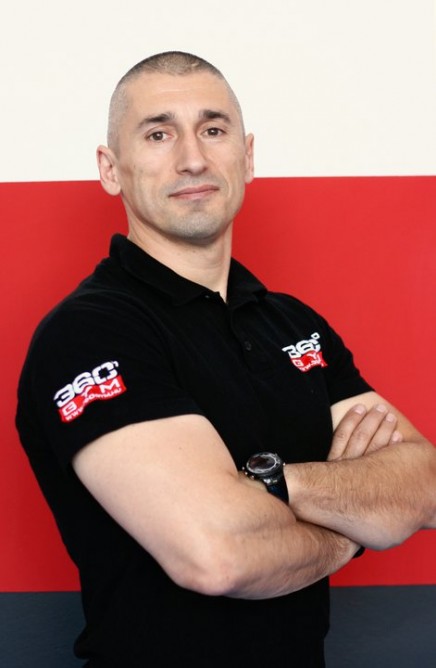
What do you think of bjj players doing group crossfit classes as their S&C training? Is that type of training benificial for BJJ or is better to just focus on a good old fashioned basic lifting program (deadlifts, squats, bench ets)
I will lose a few Crossfit friend here, but hey – life is not easy… Crossfit is very complex, requires high skills in several sports from gymnastic to weightlifting, from running, sprinting to throwing. When you start timing exercises, your competitive athlete will compete with others, the timer or with himself. Now, when you have a very complex sport – BJJ – where injury might happen, dont add another component to your training, where you elevate the chance of getting injured. I dont recommend the Crossfit type of training in our case, I rather reccommed for strength a more like powerlifting approach, our in our case – Strongfirst approach, what is from Pavel Tsatsouline. And as we say, there is no school like old school – that is true for BJJ and true for strength training.
Do you think it’s possible to achieve great competition results at a high level with just training Jiu-Jitsu and not lifting weights?
As I understand that is what Caio Terra is doing, and I never argue over results, favorite colors or food. Being strong – what must be equaled with the competency in quality human movements – is not about helping more trophies, but being able to train for later years in your life. We know from research strength and health overall among older citizens also has a huge correlation.
What’s next for you in 2013?
Studying more about strength and coaching, learning BJJ as much as possible. Currently I am very much interested in the mental training part of BJJ, that is high on my list now.
If you want to thank somebody or sponsors, feel free.
First of all thanks to my master Mihaly Sztraka and Gabor Fodor, Ferenc Pajor – the opportunity I can directly learn from them is priceless. Also I am very thankful for the support of Carlson Gracie Jr, and the whole Carlson Gracie Team Hungary and to our coaches in 360GYM, who helps me to do what I love to do – training.
Thanks Peter and all the best.
Thanks. Here’s some further reading:
http://www.functionalmovement.com/
http://www.cdc.gov/physicalactivity/growingstronger/why/index.html
http://www.t-nation.com/free_online_article/most_recent/conditioning_is_a_sham&cr=



